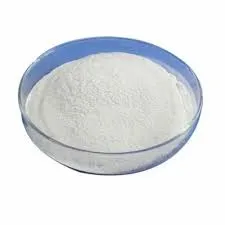
Dec . 05, 2024 13:46 Back to list
Hydroxy Methyl Propyl Cellulose Applications in Various Industries and Its Benefits
Hydroxy Methyl Propyl Cellulose An Overview
Hydroxy Methyl Propyl Cellulose (HMPC) is a versatile cellulose derivative that finds applications across a variety of industries due to its unique properties. As a water-soluble polymer, HMPC is derived from natural cellulose, which is abundantly available and widely used. This compound is characterized by its hydroxypropyl and methyl groups that confer it with distinct functionalities, making it a valuable ingredient in pharmaceuticals, food products, cosmetics, and various industrial applications.
Hydroxy Methyl Propyl Cellulose An Overview
In the realm of food science, HMPC acts as a texture modifier and stabilizer in various food products. It improves the viscosity and mouthfeel of food items, making them more appealing to consumers. Its ability to retain moisture is particularly valuable in baking applications, where it helps keep baked goods soft and fresh for longer periods. Furthermore, HMPC is considered safe for consumption, which aligns with increasing consumer demand for clean-label ingredients in food products.
hydroxy methyl propyl cellulose

Cosmetic formulations also benefit from the inclusion of HMPC. Its film-forming properties allow for the creation of long-lasting makeup products, such as foundations and mascaras, that adhere well to the skin. Additionally, HMPC serves as a thickening agent in creams and lotions, providing a desirable texture while enhancing the product's overall stability. The increasing trend toward natural and effective personal care products has led to a rising interest in HMPC as a viable ingredient.
In the construction and building materials sector, HMPC is used as a key additive in cement and tile adhesives. It enhances the workability and adhesive properties of these materials, ensuring that they remain workable for longer and adhere effectively to surfaces. This is especially crucial for tiling projects, where ensuring a strong and durable bond between tiles and substrates is essential for longevity and performance.
Moreover, the environmental impact of HMPC is worth noting. As a derivative of natural cellulose, it is a renewable resource, making it more sustainable than many synthetic alternatives. The shift towards eco-friendly materials in various industries has led to an increase in the demand for biomass-derived polymers like HMPC, which are biodegradable and have a lower carbon footprint.
In summary, Hydroxy Methyl Propyl Cellulose is a multifaceted ingredient that plays a vital role in a wide range of applications, from pharmaceuticals to food products and cosmetics to construction materials. Its unique properties of solubility, thickening ability, and film-forming characteristics make it invaluable in enhancing product performance and consumer experience. As industries continue to evolve and prioritize sustainability, HMPC's role is likely to expand, reinforcing its significance in both traditional and innovative applications. Whether contributing to the efficacy of a medicinal product or improving the texture of a food item, HMPC stands out as a crucial component in modern formulations.
-
Versatile Hpmc Uses in Different Industries
NewsJun.19,2025
-
Redispersible Powder's Role in Enhancing Durability of Construction Products
NewsJun.19,2025
-
Hydroxyethyl Cellulose Applications Driving Green Industrial Processes
NewsJun.19,2025
-
Exploring Different Redispersible Polymer Powder
NewsJun.19,2025
-
Choosing the Right Mortar Bonding Agent
NewsJun.19,2025
-
Applications and Significance of China Hpmc in Modern Industries
NewsJun.19,2025







